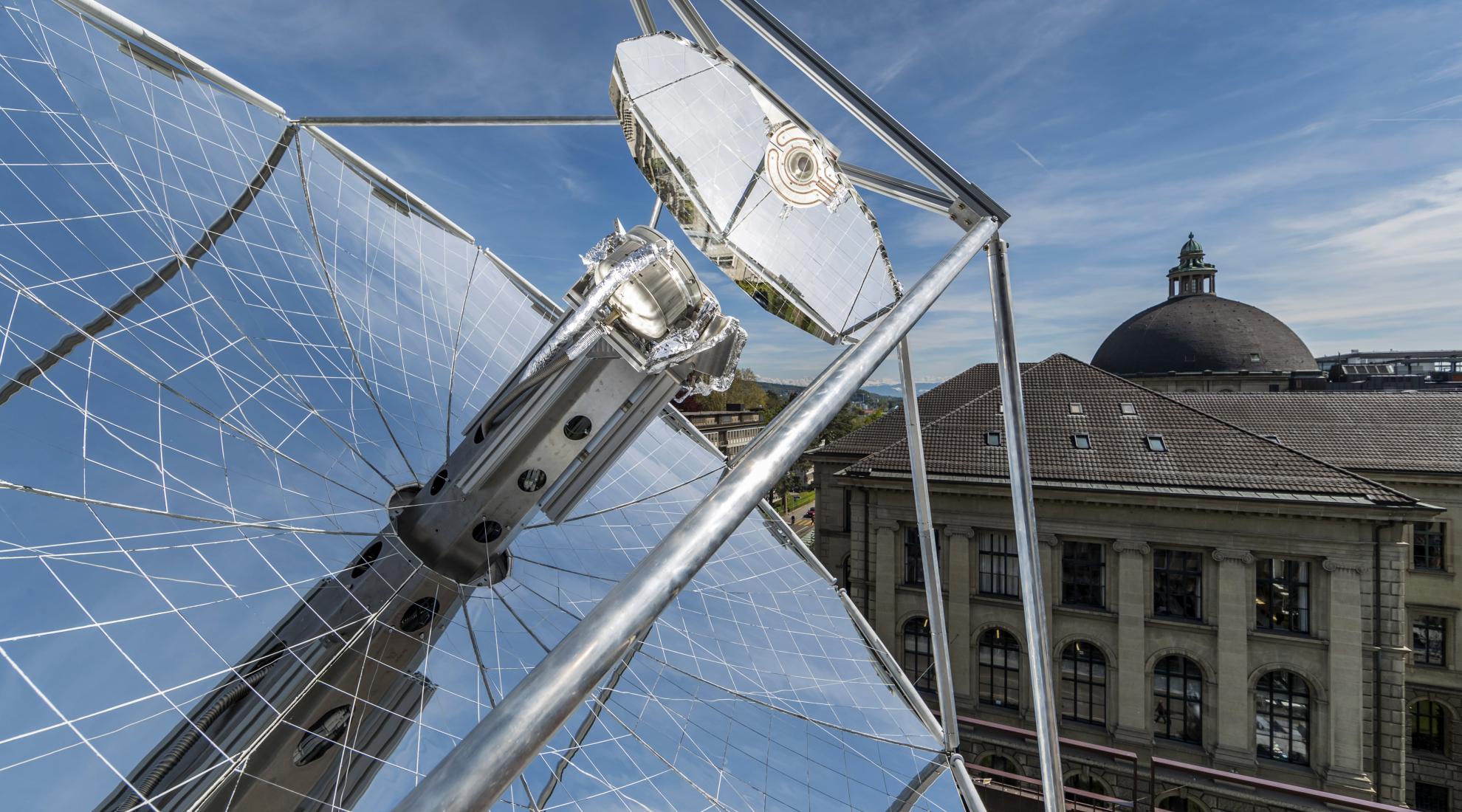Fuel from sunlight and air

Researchers at ETH Zurich have achieved an important world premiere: they have developed a technology that produces CO2-neutral fuels from sunlight and air. The solar refinery is already working under real conditions.
Climate-neutral petrol, diesel or kerosene from air and light - what sounds like a human dream in times of climate debate has become reality at ETH Zurich. Since 2019, a solar mini-refinery has been located on the roof of ETH’s Machine Laboratory in the centre of Zurich, demonstrating the technical viability of the entire thermochemical process chain for converting sunlight and ambient air into synthetic fuel alternatives such as kerosene and petrol.
Transforming sunlight into fuel
At the heart of the project are two solar reactors that are heated to 1,500 degrees Celsius with concentrated sunlight from a parabolic mirror. They convert CO2 and water into syngas, a mixture of hydrogen and carbon monoxide. In a further process, syngas is converted into various hydrocarbons, the fuels commonly used in cars and planes today. The CO2 and water needed at the beginning are extracted directly from the ambient air. The waste heat from the solar reactor can be used as an energy source for the first reaction step.
Technical feasibility demonstrated
After two years of extensive testing with five kilowatts on the roof of the ETH building, the researchers are satisfied with the results:
We have successfully demonstrated the technical viability of the entire thermochemical process chain for converting sunlight and ambient air into drop-in transportation fuels. The overall integrated system achieves stable operation under real conditions of intermittent solar radiation and serves as a unique platform for further research and development.
However, according to the research team the energy efficiency is still too low for use in daily life. During a representative day run, the amount of syngas produced is about 100 standard litres, which can be processed into about half a decilitre of pure methanol. Several components of the production chain will be optimised in the coming years in order to achieve higher energy efficiency.

The research plant is located on the roof of the ETH building on Sonneggstrasse.
In a recent report published in the prestigious research journal Nature, the ETH researchers also provide an insight into the necessary infrastructures for a broad application of the technology: a large plant could look like a solar thermal power station, with numerous mirrors focusing sunlight onto a central tower. The team calculates that a plant with ten fields, each collecting 100 megawatts of solar radiation power, could produce 95,000 litres of synthetic kerosene per day. That is enough to fly an Airbus A350 from London to New York and back.
Promising Swiss industry initiatives
The next step is to transfer technology to industry, for example by licensing patents. Two spin-offs have already emerged from the original working group: Climeworks markets the technology for carbon dioxide capture from the air, while Synhelion commercialises the technology for producing solar fuel from carbon dioxide.




